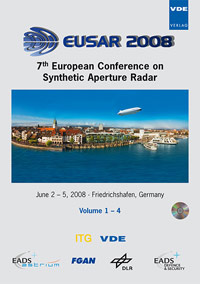Bistatic Experiment with Ultra-Wideband VHF-band Synthetic- Aperture Radar
Conference: EUSAR 2008 - 7th European Conference on Synthetic Aperture Radar
06/02/2008 - 06/05/2008 at Friedrichshafen, Germany
Proceedings: EUSAR 2008
Pages: 4Language: englishTyp: PDF
Personal VDE Members are entitled to a 10% discount on this title
Authors:
Ulander, Lars M. H. (Swedish Defence Research Agency (FOI), Linköping, Sweden)
Flood, Björn; Frölind, Per-Olov; Jonsson, Tommy; Gustavsson, Anders; Rasmusson, Johan; Stenström, Gunnar (FOI, Sweden)
Barmettler, Arnold; Meier, Erich (University of Zurich, Switzerland)
Abstract:
We describe a bistatic ultra-wideband VHF-band SAR experiment and present measurement results. The bistatic SAR system, operating in the band 28-73 MHz, is based on CARABAS-II as airborne transmitter and LORA as ground-based receiver. Monostatic SAR data can also be acquired simultaneously. In September 2007, a measurement campaign was conducted in Switzerland with the ground-based receiver located on Mount Niesen in Berner Oberland. The objective was to investigate the hypothesis that the bistatic signal-to-clutter ratio for a vehicle in a background of forested terrain or urban environment increases as the bistatic elevation angle increases. Both mono- and bistatic SAR images have been formed using backprojection techniques. Images with bistatic elevation angle of 4deg (quasi-monostatic case) show similar characteristics as the monostatic images. The images with bistatic elevation angle of 10deg and 20deg, however, indicate that the clutter level decreases over both forested and urban areas. Measurements show that the signal-to-clutter ratio for a truck vehicle in a forest background increases by up to 10 dB compared with the quasi-monostatic case. The corresponding increase in signal-to-clutter ratio for an urban background is 2-8 dB, with the higher value obtained for multi-level buildings. These observations indicate that target detection can be significantly improved by using bistatic VHF-band SAR geometries.


